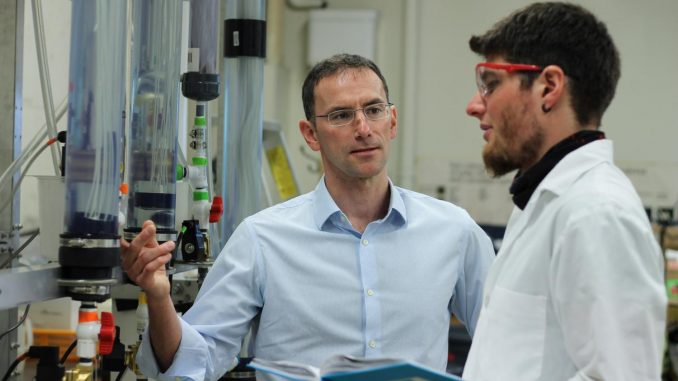
By Anirudh Bhattacharyya
New Delhi : A new low-maintenance water filtration system has been developed at the University of British Columbia and aimed at remote communities in Canada and India with scarce access to potable water.
The breakthrough technology, which combines beneficial microbes and gravity, was developed by Professor Pierre Berube, of the civil engineering department at the UBC.
Funded by the India-Canada Centre for Innovative Multidisciplinary Partnerships to Accelerate Community Transformation and Sustainability or IC-IMPACTS, the project commenced nearly four years ago and is undergoing “commercial-scale pilot testing” at a partner community near Vancouver, close to Berube’s laboratory.
“The technology was developed specifically for use in small and remote communities,” Berube told HT.
Its “backbone” is “ultra-filtration membranes” for water treatment, which is a very fine screen that removes not just particulate matter but also large molecules, like disinfectants or herbicides and pesticides.
It’s also “very effective in removing contaminants from water such as microbial pathogens like protozoa and viruses and bacteria.” Working in concert with a community of bacteria, a second line of defence, breaking down anything that is biodegradable, it offers 99.9% efficacy in removing contaminants in the water.
But the real benefit comes in the manner in which the system is operated, one that is particularly useful for small communities.
Berube explained: “What happens over time is those contaminants accumulate at the membrane surface and you need to remove them. And it’s the removal of the contaminants and not the treatment of the water, that’s complex. So to remove the contaminants you commonly use pumps and chemicals and blowers.”
“What we’ve developed is the use of that same membrane technology without any of that complexity. What we use is simply gravity to reverse flow and to induce turbulence which is very effective at cleaning the membrane and we use a microbial community to eat away at the contaminants that can’t be removed by that turbulence,” Berube said.
His process also removes the requirement for experienced personnel to work the mechanical aspect of maintaining a water treatment system. Instead, members of the local community can be trained to ensure the system is kept clean. “The biggest impact is on operational cost and operational complexity,” Berube said. And doing away with parts like blowers or motors makes the system compact, with a relatively small footprint.
“One of our units can supply two to ten cubic metres per day, so that’s enough for a cluster of homes or an apartment building,” Berube pointed out.
This system can be effective in dealing with surface water, such as rivers, lakes, and shallow groundwater. “Pilot trials have been going on for about a month now, all very promising” Berube said.
On the horizon is also bringing the technology to India, as originally planned, though that will depend on Berube being able to find communities and universities to partner with. “We’re hoping that after we’ve pilot tested in a small First Nations community on the west coast of Vancouver Island, the next step will be pilot testing in India,” Berube said.
Source: Hindustan Times

Leave a Reply